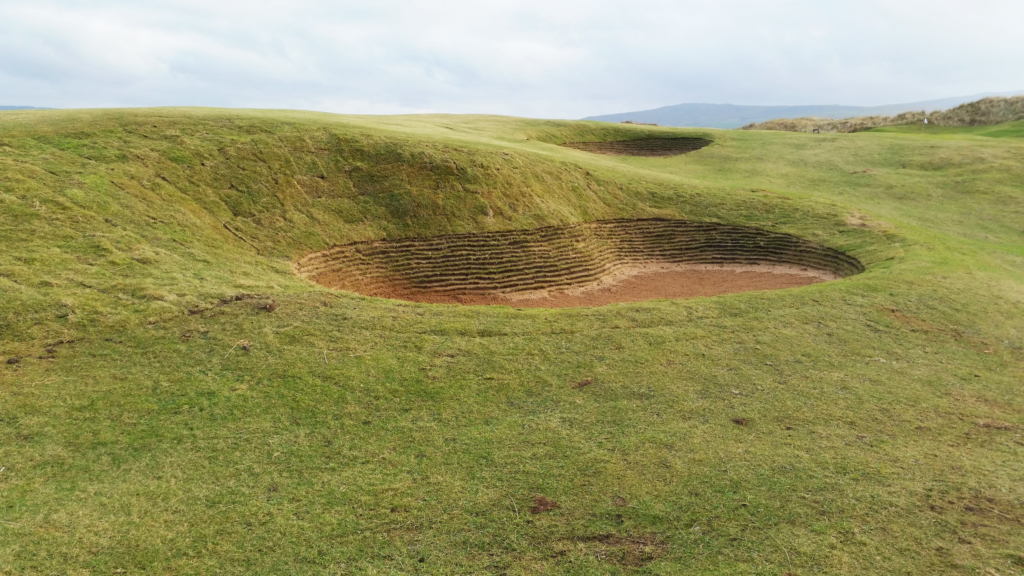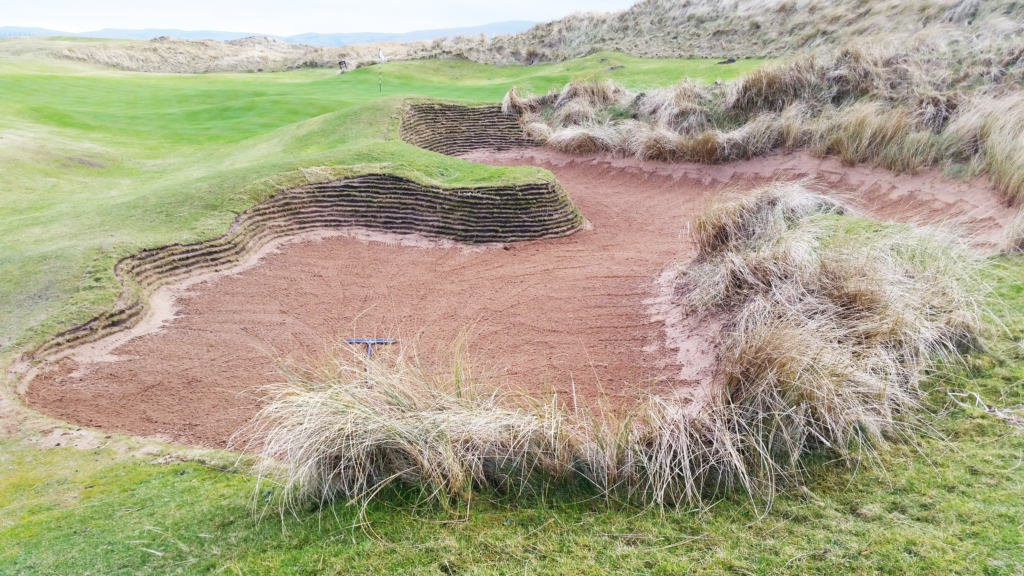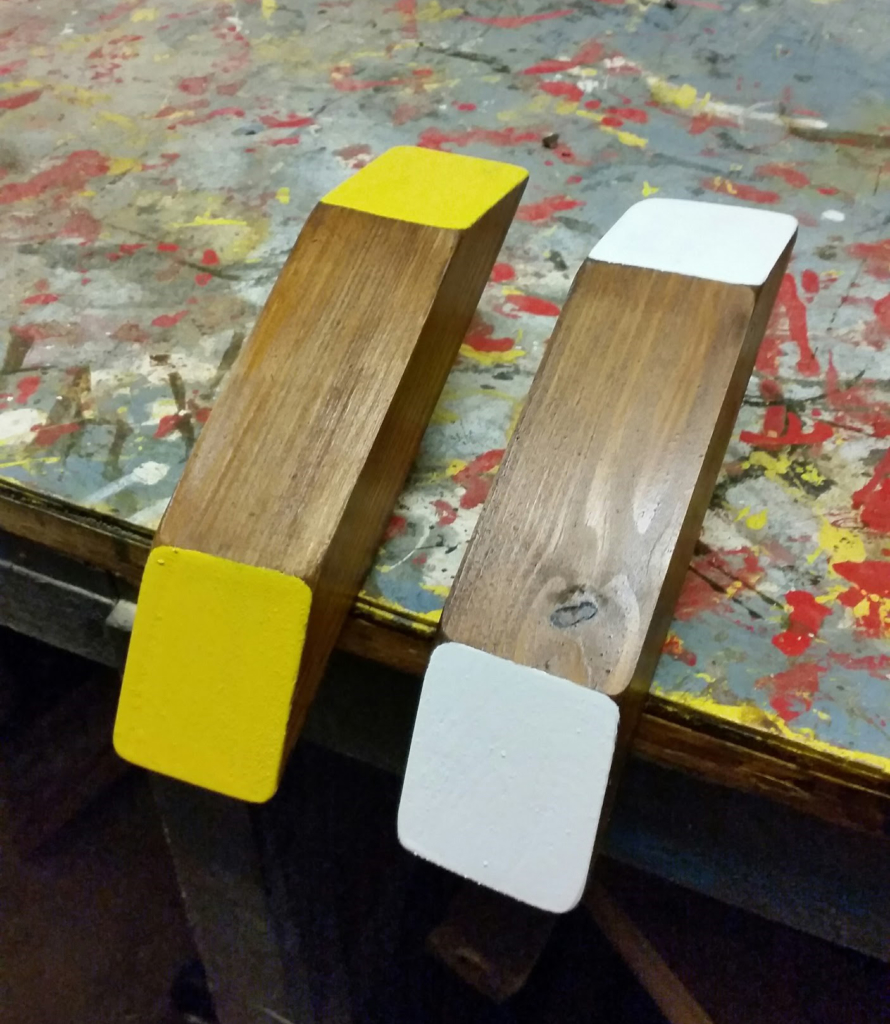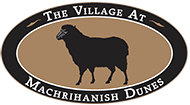The festive season is but a distant memory now. Here at Machrihanish Dunes we have been blasting on with the projects that we set out in our Winter program. Our priority is always to keep the turf surfaces in optimum condition. It is easy to lose focus on this when the grass stops growing so quickly and there are fewer golfers playing the course daily. Although this winter has been relatively calm so far, we have been subjected to occasional Westerly gales which have sprayed the shore-side greens and tees with copious amounts of sand and salt. We have been doing everything we can to retain grass cover on these surfaces, and have taken the 5th green out of play temporarily as a precautionary measure. We are lucky to have a spare hole of similar length that we can use in these circumstances. It will be part of the golf course from now until sometime in late March. We apologise for this inconvenience, but we feel it is better to suffer this time of the year than it would be during the main golf season.
Looking After Uncle Joe
On good days during the winter months we get stuck into construction projects, and this year our focus has been on re-facing the bunkers. The bunkers at Machrihanish Dunes have been a source of continual discussion since the course’s “construction”, with the wild, blown-out look appealing to those who appreciated the original marketing ethos. These hazards were cut out of the existing ground, fringed with marram grass and left to blow. There is no doubt that this approach suited the untamed look of the course. Over time though, the edges of these bunkers have collapsed and fallen in, and the marram that once helped to retain the sand had become so overgrown that players were losing countless balls in the hazards. Bunkers that once flanked the extremities of cut grass at some holes found themselves marooned as wild oases surrounded by semi-rough as the course was widened out to aid the speed of play and reduce the frustration felt by less able players. We felt that some of them looked a bit silly and derelict, and we knew that many of them had become completely unfair, but we were aware of how easy it would be to ruin the charm of the golf course by changing the style of them completely.
Having consulted as many people involved in the project as we could, we settled on reconstructing with revetted faces of the bunkers that were surrounded with cut grass, while leaving wild the ones that still faced into untamed rough. Some bunkers that had cut grass on one side and wild rough on the other were revetted halfway round, with the wall tucked into the marram at the join. We figured that this approach was the best way to make the bunkers fit into the overall landscape of the golf course as it stands today, as there is no doubt that the course looks considerably less wild and far more mature than it did when the bunkers were originally built. We were aware of the clinical visual impact that revetted bunkers can bring to a course and we had a desire to avoid this as we didn’t want these hazards becoming too much of a focal point for the eye. We were keen to retain as much as possible the natural look for which Machrihanish Dunes has become famed, so we have avoided revetting the walls too high – opting instead to revet only as high as we needed to in order to retain sand before rolling turf over the rest of the face.

The bunkers, or portions of bunkers, that due to their position on the course have not been given revetted faces have been cleared out to make them fairer to play from. The marram grass in these faces forms a huge mass of roots, shoots and leaves that in time forms its own turf – so we have found that it is relatively easy now to trim these back and form a defined edge on these bankings

Our Worldwide Director of Golf Operations, Greg Sherwood, always asks me to look after Uncle Joe when undertaking projects such as this. It is a simple request, but the effects of ensuring that the requirements of the average golfer are catered to are so wide-ranging that this really governs everything that we do. However, it does illustrate perfectly how the focus of Machrihanish Dunes has changed since those early days when the development was marketed as “the way golf began”. Whether we like it or not, the golf course is a business and to survive in the marketplace the links should be an enjoyable, fun and attractive place for everyone to play. It had become clear that although some people found the wild bunkers to be aesthetically pleasing, they were impacting in a negative way on the enjoyment and fun of players like Greg’s fictitious Uncle Joe. Therefore, we had to do something positive about them to maximise our opportunity to encourage guests like him to make a return visit. Simply removing the offending marram grass did not work, as this approach removed all semblance of character and left us with unattractive, featureless holes in the ground. Making the switch to revetted bunkers in places may appear to be a somewhat generic solution to the issue on what is a highly individual golf course, but we hope that we have incorporated enough design flair into our construction to ensure that these bunkers are looked upon favourably by those golfers who do have an appreciation for golf course design. What we have done is create a definitive blueprint for future bunker re-construction, and we have certainly succeeded in removing the unfair element that negatively impacted the enjoyment of Uncle Joe.
Furniture Upgrades
Building bunkers is great fun on nice days, but when the weather turns nasty on us, there are plenty of jobs to keep us busy indoors. One such task that we have undertaken this winter is to make new tee markers for the course. We felt that the painted stones used since opening day were another thing that we had the opportunity to improve upon. As with the bunkers though, the perceived improvement that these markers will bring to the tees is in the eye of the beholder and we know they will not appeal to everybody! One member did tell me in jest that he preferred these wooden ones because when he hit a bad shot and took his anger out on the marker these would not damage his driver to the same degree. Please don’t do that!
The process of constructing these markers is fairly simple and is definitely cost-effective as they are merely cut from 4.5 metre lengths of 3”x2” dressed timber, then sanded to remove sharp corners and rough edges before being wood-stained. The angled ends are then given 2 coats of the appropriate colour of gloss. When I was starting out as a greenkeeper 30 years ago, most squads painted their own signs and markers, and some of these guys were extremely good at it. It’s a shame that this winter ritual seems to have become a bit of a dying art. I think it shows a willingness from a greenkeeping team when they can take on a project like this, and do it as tidily as they possibly can and really show off their skills. Whenever I visit other courses, I always look to see whether markers and posts have been built or bought, and when I see a selection of well-made furniture that has obviously been made in-house, I will give it some deserved appreciation. Quite apart from adding an individual look to the course, a well sculpted set of home-made markers saves a club a fortune. I have seen markers that look just like ours retail for over £10 each, whereas ours cost just £1.05!

The Season Approaches
During periods of relentless bunker-building and tee marker construction, it would be easy to let the upcoming golf season sneak up on us, but we are fully aware that we are only weeks away from our first major of 2017, the inaugural Black Tee Open on April 1st. For those of you with a slightly less masochistic nature, the annual Team Challenge (in association with Dunaverty Golf Club) follows soon after over the weekend of April 22nd/23rd. For more information on either of these competitions—or indeed any information you might need about the latest goings-on at Machrihanish Dunes—just phone Lorna at the Golf House on 01586810058 or email her at golfhouse@machdunes.com.
Enjoy your golf!

